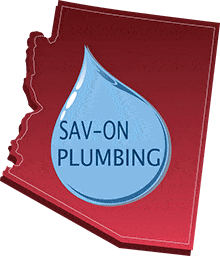It’s in the smallest room of the house, but you use your toilet every day. When it’s not working right, the thought of toilet repair can be frustrating. So what’s going on? Let’s take a look inside the tank, first:
Remove the lid from the top of the water tank on the toilet and use the handle or button to flush the toilet a few times. In a working toilet, the flushing process works like this:
- The chain lifts a piece of rubber called the flapper valve. It’s also called a stopper or tank ball, depending on your type of toilet. This lets the water out of the tank and into the bowl.
- As the water flows into the bowl, it forces the waste water from the toilet bowl through the trap to your building drain pipe or sewer line.
- When the tank is empty, the flapper closes and fresh water begins to re-fill the tank.
- The fill valve determines when the tank is full and then shuts off the water.
Here are some common problems we’ll help you diagnose:
Are you getting water on the floor around the toilet?
It seems obvious, but you need to wipe the water up immediately before it has a chance to seep into the subflooring.
Your second step is to determine where the water is coming from.
- Check your connections. Check to make sure that all of the connectors are tight. Those include the ones holding the tank fill valve, tank and the water supply line that brings water to the tank. If they turn easily in your hand, tighten them with the appropriate tool.
- Check your tank. Is it wet? In humid climates, a tank will sweat just like a beverage glass. When the liquid inside is colder than the outside air temperature and you’re in a more humid environment, you’ll get condensation. In Peoria, AZ, however, it’s more likely that you have a cracked tank which will need replacing.
- Check the toilet base.
- If you’re getting water around the base of the toilet during or after a flush, you may need to replace the wax ring. The wax ring helps seal the toilet to the floor and the sewage pipe.
- If the toilet base leaks constantly, then the toilet base may be cracked and you’ll need to replace it.
What happens when you flush the toilet?
For flushing problems, look into the tank to determine if you have plenty of water flow. The pressure generated by the water leaving the tank and moving into the bowl is what makes the toilet flush, and the main parts that control your water flow are:
- The lift chain. When there’s too much slack, the flapper valve won’t open all the way and you won’t get all of the water from the tank to move into the bowl. Not enough water results in too little pressure and an incomplete flush.
- The flapper valve. If it isn’t sealing properly, it’s constantly letting water leak into the bowl and causing the water to run.
- The handle. If the handle is too tight or too loose, or it isn’t connected to the lift chain, then it won’t enable the flapper valve to open.
- The water supply line. Is the tank getting enough water? Check the water supply line and make sure the angle stop valve is completely open. Turn it all the way to the left (counter-clockwise) to open the supply line valve all the way. If the tank still doesn’t fill, then the supply line is clogged or damaged and the tank cannot get enough water.
Is your toilet noisy?
A noisy toilet can be caused by a partially closed water supply line but more often is caused by a worn-out toilet fill valve.
- For maximum water flow: Turn the water supply all the way to the left (counter-clockwise).
- If adjusting the water flow doesn’t stop the noise, replace the fill valve.
Is your toilet clogged?
- Use a plunger to cover up the exit trap, the area that is at the bottom of the toilet where waste water exits the bowl.
- With the plunger head covering the exit trap, work the plunger handle up and down. This creates suction and pressure to push the blockage through to the down pipe.
- When the waste water empties, flush the toilet again to ensure that the blockage is removed.
Talk to us at Sav-On Plumbing for your toilet repairs today, and a licensed plumber will get your smallest room in the house back into working order, quickly.
